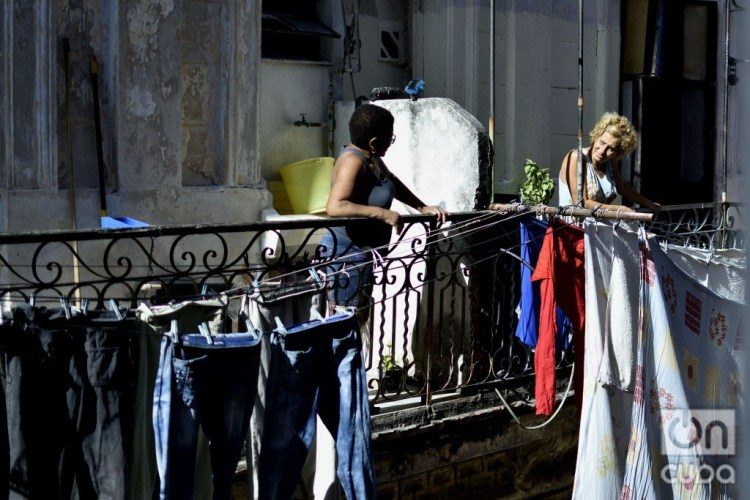A few weeks ago the Cuban government announced a group of monetary transformations to face the complex financial and balance of payments situation that is overwhelming the economy. They are not related to the monetary reform that has been announced for years. They are not aimed at unifying the monetary system, but instead they produce new fragmentations.
They don’t point to a definitive and long-term solution to the complex and distorting system of multiple types of exchanges and monetary duality. They are measures to face the current crisis and seek some quick relief from the growing financial imbalances that have been accumulating since 2015 in the wake of the Venezuelan crisis and the freezing of the promised structural reforms, a situation that since the end of 2017 has worsened with the intensification of the current U.S. administration’s economic sanctions.
The motivation is not to structure a monetary system that effectively contributes to the country’s long-term strategy and the development of the entire productive system. Again they are measures that are taken in the heat of an emergency and looking for an immediate result, without much time to think about future implications. In fact, the monetary reform that until recently was presented publicly on the official agenda was the monetary unification.
Recent decisions are moving in the opposite direction, leading the economy to operate not with two, but with three currencies: the Cuban peso, CUC and USD (or its equivalent in other foreign currencies). They don’t restore the Cuban peso as the only monetary sign, as embodied in multiple official documents, but partially re-dollarize the economy.
The measures pursue a very precise objective. To prevent families and the private sector from continuing to import goods through informal routes, especially through people who travel to Panama and other destinations, shop in these markets and return to Cuba with merchandise. The aim is to avoid the flight of foreign currencies and that they be spent in the national territory.
For this, consumer markets are being organized that will work in dollars and operate with bank cards, and that will be better stocked than the current markets in CUC. In order to buy, people must have a bank account in dollars (or in other foreign currencies) in one of the state banks.
State-owned enterprises that sell in these markets will be able to use the foreign currencies to directly import their inputs without the need for approval from the central plan, and without having to deal with the local currencies’ lack of convertibility. Mechanisms are also established so that families and the private sector can import through state-owned enterprises.
It is foreseeable that positive effects will be seen in the short term. The new measures will strengthen the banks’ liquidity in foreign currencies, families will have more options to purchase in formal markets, and the private sector will have more direct access to certain inputs at lower costs. It also favors that certain state industries can receive financing, substitute imports and act with greater autonomy from the central plan. Of course, all this within the limited efficiency and competitiveness with which the state monopoly operates in foreign trade and industry, which is preserved.
The Cuban economy was already dollarized in the 1990s and in the early 2000s. In 2004, without eliminating monetary and exchange rate duality, the Central Bank de-dollarized the economy by replacing the dollars in circulation with the Cuban convertible peso (CUC). The CUC made it possible to recover monetary policy autonomy and it was seen as a transition towards a future monetary unification.
Within the Central Bank and from the academy we warned that de-dollarization implied challenges, that it was necessary to handle the issuance of the CUC with some kind of transparent and verifiable regulation. However, since 2004 the conversion box that supported the CUC was abandoned (since the CUC no longer had a hundred percent backing in dollar reserves), we never knew how many CUCs were issued each year, the National Assembly kept approving the State budget and the fiscal deficit in Cuban pesos without knowing what happened to the budget in CUC. And the economic policy never defined a regulation for a prudent management of international reserves.
Neither did the foreign exchange policy help. In the last fifteen years the economy was subject to multiple economic and financial shocks, but the CUC exchange rate remained immovable (a single correction was applied to return to parity with the USD and reverse the 8% appreciation decreed in 2004).
Having to return to the monetary and financial mechanisms of the 1990s is a de facto recognition of the failure of de-dollarization. Again having to resort to foreign currencies to make domestic markets work confirms that the policies and institutions that guided the operation of the CUC since 2004 have failed.
The disproportionate issuance of CUCs, the subordination of monetary policy to the fluctuations and excesses of public spending, and the lack of transparency, gradually undermined the convertibility and credibility of the CUC. Retail chains, state industries and even foreign companies ended up flooded with CUCs with which they can do little within domestic markets and almost nothing to carry out import operations, external debt payments and repatriation of profits.
The re-dollarization is a measure that alleviates in the short term, but makes the institutions that define economic policies look very bad. If they could not properly handle the CUC, what guarantees exist for a future scenario where only the Cuban peso circulates.
To authorize foreign exchange transactions in some consumer markets and in some industries is to open the Pandora’s box to an accelerated re-dollarization of the rest of the economy. Other state enterprises will also request participation in the new dollarized markets, foreign investors will demand to be able to operate in foreign currencies within the Cuban market and workers will demand salaries or incentives in dollars. The private and agricultural sector now also has greater incentives to set prices and charge in dollars.
Some in government spheres could be inclined to definitively abandon the Cuban peso and the CUC and dollarize the entire economy. It would be a topic to discuss. It would be necessary to consider recent experiences of economies that have not done so well without their own currency (Greece or Ecuador), and countries like Colombia that have managed to use their monetary policy and the depreciation of the exchange rate to cushion a drop in exports (due to the collapse of oil prices) greater than that of Cuba due to the Venezuelan crisis.
It would also be necessary to take into account economies such as Argentina and Venezuela itself, which with their own currency have also failed to correct their macroeconomic imbalances and stabilize GDP growth. I think that the debate would lead us very close to concluding that what matters most are the institutions, policies and structural conditions that define the course of the currencies, precisely what failed with the CUC and that will continue to be lacking if the reforms remain frozen.
The government has not said what will happen with the project to eliminate monetary duality. But it seems obvious that for now the monetary unification is out of the picture. However, the adjustment of the official exchange rate of the Cuban peso in the state business sector is still necessary.
The economy continues to require a correction of the exchange rate that clarifies enterprises’ financial balances and relative prices. The correction of the exchange rate of the Cuban peso cannot be abandoned after a significant increase in wages has been decreed in the state sector.
With a more realistic exchange rate, some degree of convertibility could be granted to the Cuban peso and encourage state enterprises to sell in pesos and mitigate the inflationary impact of wage enhancement. In fact, the devaluation of the official exchange rate of the Cuban peso could be a way to reduce the dollarization incentives of more industries and markets. The announced re-dollarization cancels the monetary unification, but not the exchange unification.










